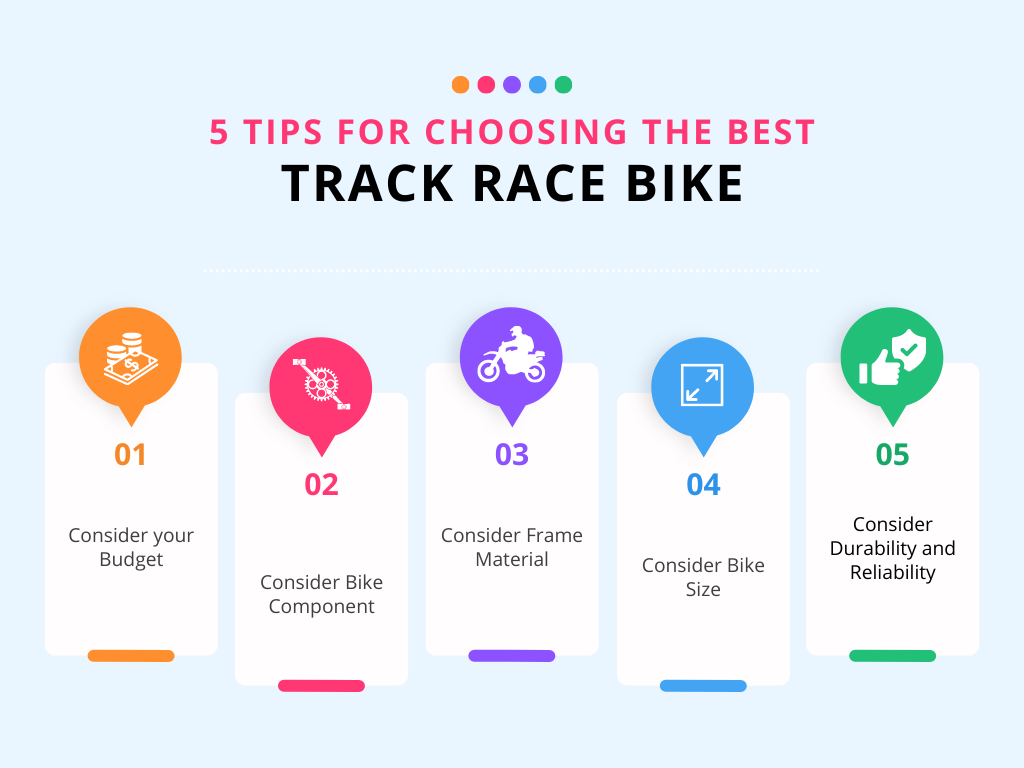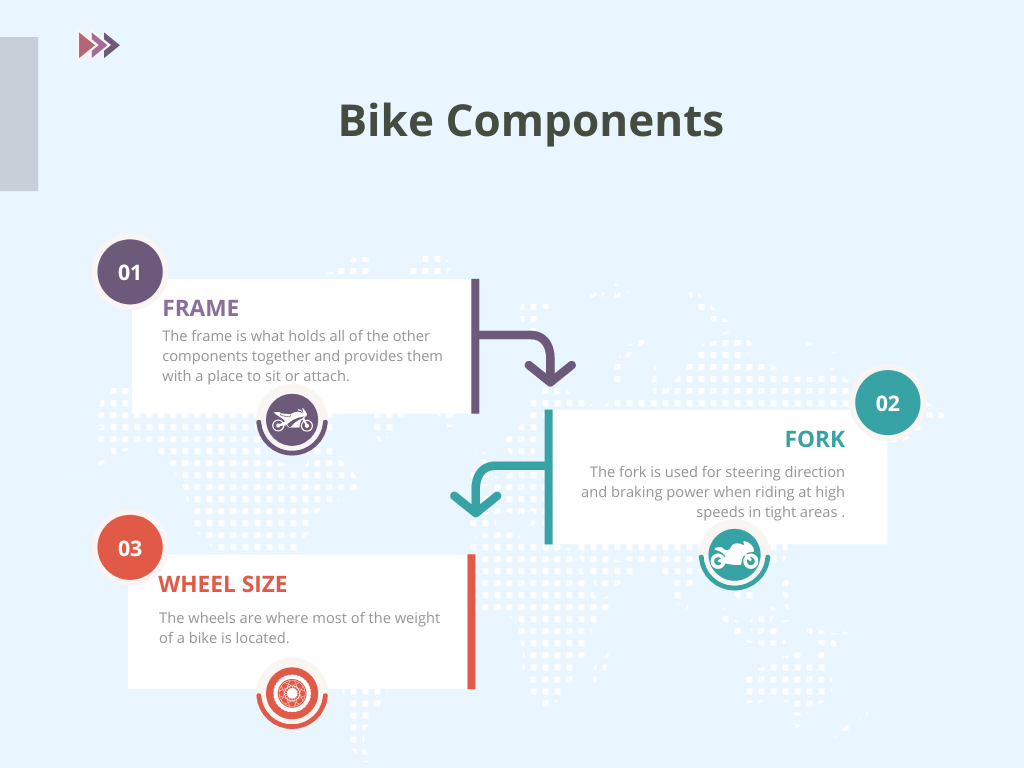
5 Tips for Choosing the Best Track Race Bike
Track Race Bike:
Track race bikes are designed to be as light as possible, with a low center of gravity and short chainstays. The large, wide-angle handlebars are used for speed and aerodynamics. The geometry is also optimized for high-performance racing such as the track or velodrome.
The frame is made from carbon fiber or aluminum alloy, which is strong enough to handle powerful brakes and tires without flexing under load. Track bikes often have a longer wheelbase than road bikes, which helps them maintain their stability at high speeds.
5 Tips for Choosing the Best Track Race Bike:
When it comes to choosing the best track race bike, there are a few things you need to keep in mind. First and foremost, you need to make sure that the bike is comfortable for you. There are a lot of different bikes out there, so you need to find one that fits your riding style. You also need to make sure that the bike is lightweight and easy to maneuver. Lastly, you need to make sure that the bike has good brakes and a high quality drivetrain.
If you keep these things in mind, then you should have no problem finding the best track race bike for you.
- Budget
- Bike Component
- Frame material
- Size
- Durability and Reliability

1. Budget:
When it comes to choosing a track race bike, budget is often one of the key deciding factors. There are a few things to keep in mind when setting your budget for a new track race bike.
- Consider the type of racing you’ll be doing. If you’re planning on racing at a high level, you’ll need a bike that can perform well at top speeds. This means that you’ll need to invest in a higher quality frame and components.
- Think about how often you’ll be racing. If you only plan on racing occasionally, you can get by with a less expensive bike. However, if you’re planning on racing regularly, it’s worth investing in a better quality bike that will hold up to the wear and tear of frequent racing.
- Consider your riding style. If you’re an aggressive racer who likes to push your bike to the limits, you’ll need a sturdier frame and tougher components. On the other hand, if you’re more conservative in your riding style, you can get away with a lighter weight bike with less durable components. Keeping these factors in mind will help you narrow down your choices and find the best track race bike for your budget.
2. Bike components:
Bike components are the most important part of any bike. They make up the foundation of the bike and provide you with a solid base upon which to build your racing style.
Bike components can be separated into three main categories: frame, fork, and wheels. Each of these components plays an important role in how you race your bike as they affect the race quality, handling, and performance of your bike.
Frame:
The frame is what holds all of the other components together and provides them with a place to sit or attach. The frame can be made from metal, aluminum or even carbon fiber depending on how much money you want to spend on your bike. It also determines how stiff or flexible your bike will be when it comes to handling bumps in the road or making turns at speed.
Fork:
The fork is used for steering direction and braking power when riding at high speeds in tight areas like city streets or on trails where there may be more than one way through a trailhead intersection! The fork also helps stabilize the front end of your bike during hard landings such as landing jumps off ramps or jumping curbs at stoplights!
Wheel size:
The wheels are where most of the weight of a bike is located. You want to make sure that they’re strong enough to handle being ridden fast on dirt or gravel roads without breaking easily. If you plan on racing on asphalt tracks, then you’ll want wheels with less weight and more durability than those found on road bikes.

3. Frame Material:
One of the main things to consider when choosing a track race bike is the frame material. There are three main types of frame materials used in racing bikes: aluminum, carbon fiber, and titanium. Each has its own benefits and drawbacks that need to be considered before making a purchase.
Aluminum is the most common type of frame material used in track race bikes. It is lightweight and affordable, but it is also not as strong as the other two options. Carbon fiber is much stronger than aluminum and is often used in higher-end race bikes. However, it is also more expensive. Titanium is the strongest option but is also the most expensive.
When choosing a frame material, it is important to consider what you will be using the bike for. If you plan on racing competitively, then you will need a stronger frame that can withstand the rigors of racing. If you just want to ride around town or on trails, then an aluminum frame will likely be fine. Ultimately, it comes down to personal preference and budget when deciding on the best frame material for your needs.
4. Size:
The size of your bike is important because it will determine how comfortable and safe you are on the road. If you have a small frame, you will probably want to purchase a track bike that is more compact. On the other hand, if you have a larger frame, then you should go for a larger bike.
The size of your body can also play an important role in determining which bike goes best with you. For example, if you are heavier than average or have extra weight around your middle area, then it may be wise to opt for a track bike that has more stability and support for your joints and muscles.
5. Durability and Reliability:
Durability and reliability are two of the most important factors in choosing a track bike. The best track bikes are durable and will last for years, not just months.
The frame should be made of high-quality steel that is designed to withstand the abuse of each and every track race. The frame should also be designed with aero tubes that allow for minimum wind resistance while riding at high speeds.
The wheels should be made from either aluminum or carbon fiber, as they are both extremely durable, lightweight, and resistant to corrosion. Aluminum wheels can be found on many budget bikes, but carbon fiber is simply better suited for racing on tracks because it has superior strength and durability over other materials such as steel or titanium.
The seatpost is important because it helps to maintain your position on the bike during hard sprints and turns around corners. A seatpost that is too long will cause your back to hurt after long hours of racing at high speeds on tracks across the country!
Conclusion:
Choosing the best track race bike should not be a daunting task. With our 5 tips, you will be able to find the perfect bike for your needs and skill level. Whether you are just getting started or an experienced racer, there is something out there that will fit your style and budget. Give yourself time to research, test ride different bikes and make sure it fits you properly before making a purchase decision. A good quality track race bike can last you many years – so take your time in finding the right one!
Post a Comment
You must be logged in to post a comment.

